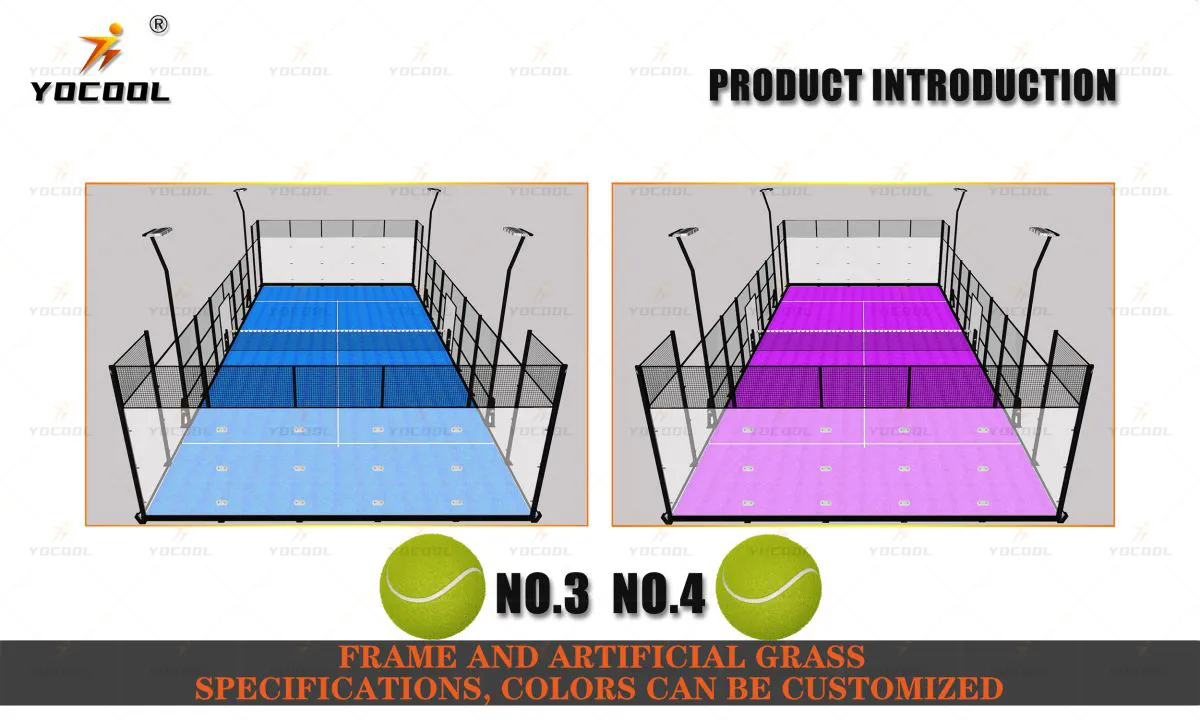

The Financial Breakdown of Building a Padel Court Factory
Padel is rapidly becoming one of the most popular racquet sports globally, with an increasing number of enthusiasts and players. This surge in popularity presents a lucrative opportunity for manufacturers of padel courts. However, like any business venture, establishing a padel court factory requires thorough planning and an understanding of various costs involved. In this article, we will explore the key factors and costs associated with building a padel court factory.
Initial Investment Overview
1. Land Acquisition The first step in building a padel court factory is securing a suitable location. Factors to consider include accessibility, local demand for the product, and zoning regulations. Depending on the region, land costs can vary significantly; however, it is crucial to choose a location that offers a balance between affordability and strategic positioning.
2. Construction Costs The construction of the factory itself will comprise a substantial portion of the total investment. This includes materials, labor, and the actual building process. The size of the factory will depend on anticipated production capacity. A basic estimate for construction might be between $100 to $200 per square foot, factoring in high-quality materials and labor costs.
3. Facility Design and Equipment A factory needs to be designed specifically for padel court production. This includes space for assembling courts, storing materials, and a shipping zone. Additionally, specialized machinery will be required, such as cutting and joining tools specifically designed for wood and synthetic materials used in court construction. Equipment costs can range from $50,000 to $300,000 depending on the scale of production and technology used.
4. Utilities and Infrastructure Building a facility means ensuring that essential utilities such as electricity, water, and waste management systems are set up. Infrastructure costs can also include parking spaces and access roads. Depending on the locality and specific needs, utility setup can range from $20,000 to $100,000.
Operational Costs
Once the factory is built, ongoing operational expenses must be considered
.

1. Staffing A padel court factory will require skilled labor and administrative staff. This includes factory workers, engineers, and sales and marketing teams. Salaries will depend on the local job market, but the payroll budget might range from $150,000 to several million annually depending on the number of employees.
2. Material Sourcing The primary materials required for constructing padel courts typically include wood, fiberglass, and synthetic turf. Establishing reliable suppliers for quality materials is crucial. Initial inventory purchases can cost anywhere between $50,000 and $200,000, and ongoing costs can fluctuate based on production demands.
3. Marketing and Sales Building a brand and marketing the product is essential for success. This might involve promotional campaigns, trade shows, and digital marketing strategies. An effective marketing budget could range from $10,000 to $100,000 annually, depending on the scope of the advertising efforts.
Regulatory Costs and Permits
Starting a factory involves navigating local regulations, which can incur costs in obtaining necessary permits and licenses. This includes environmental assessments, building permits, and other legal documentation. The regulatory costs can vary greatly from one location to another, ranging from a few thousand to tens of thousands of dollars.
Financial Projections and Break-Even Analysis
With all costs factored in, it is vital to perform financial projections. A break-even analysis will help determine how long it will take to recoup the initial investment. This involves estimating the sales needed over time to cover fixed and variable costs. It is essential to have a solid business strategy and clear market analysis to make these projections realistic.
Conclusion
Building a padel court factory is a significant investment that requires careful planning and understanding of various associated costs. From land acquisition to operational expenses, each element plays a crucial role in the success of the venture. With the right strategy and execution, entering the padel market through court manufacturing can prove to be a profitable endeavor in an industry that continues to flourish. As the sport grows, so too does the potential for successful businesses centered around it.
Durable Industrial Flooring Solutions China Padel Install
Durable Rubber Floor Slip-Resistant & Easy Clean
Durable & Slip-Resistant Rubber Floor Mats Ultimate Protection
Industrial Flooring Solutions for Indoor Paddle Tennis Factories
Premium Homogeneous Transparent Rubber Floor - Durable & Clear
Premium PVC & Rubber Sports Flooring - Safety & Durability